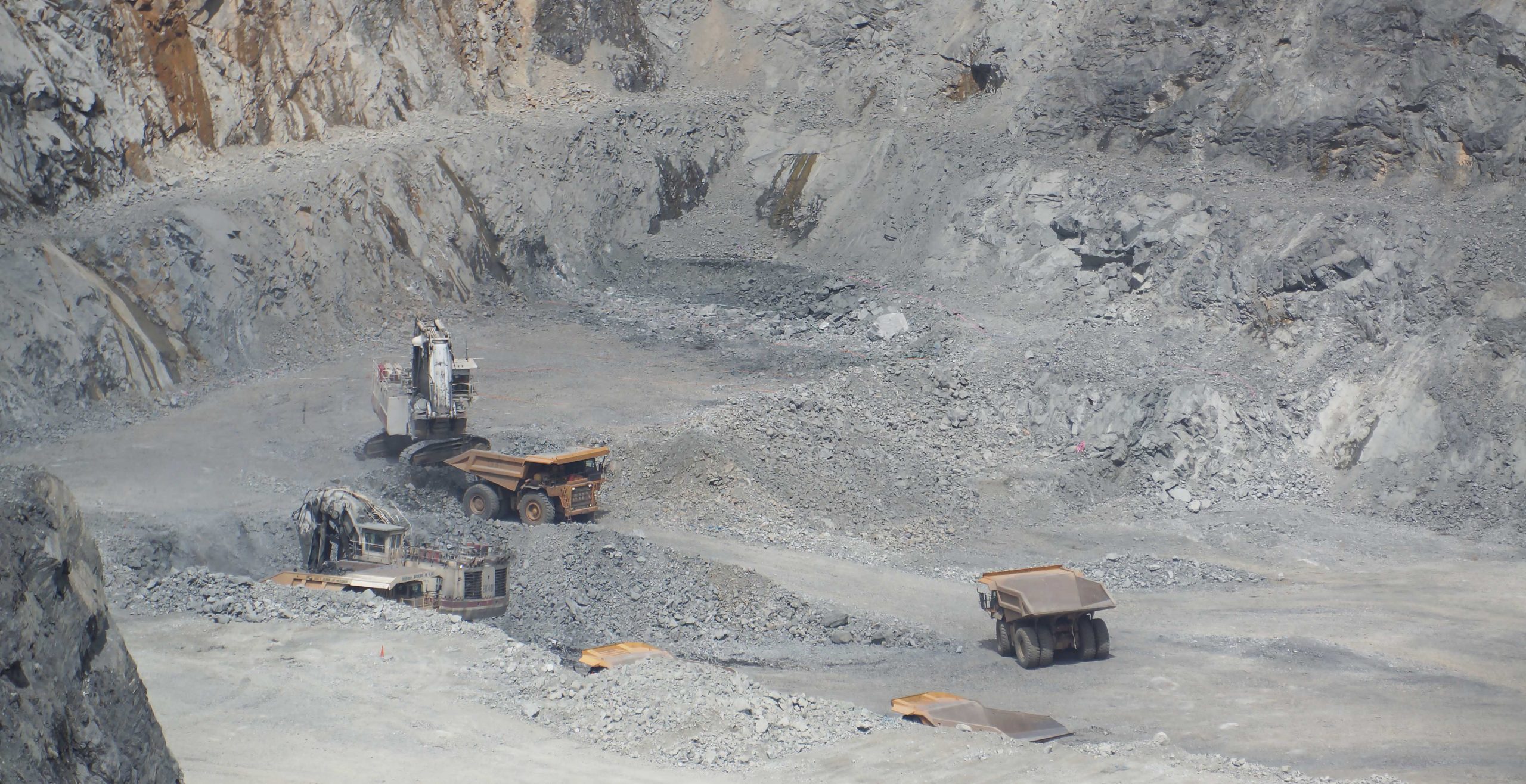During the mining of mineral resources, a large number of surrounding rocks and rocks without minerals will be produced, which are called waste rocks. At present, the storage capacity of mine waste rocks in my country has reached tens of billions of tons, and the annual discharge of waste rocks has reached 600 million tons. Tail waste rock, etc.
 Mine waste rock often contains a small amount of valuable metals, so it has a certain pre-enrichment value. If the valuable metals in the waste rock are reused, the utilization rate of resources can be improved to a certain extent. In addition, waste rocks also contain a large number of gangue minerals, such as carbonates and silicates, which have high strength and stable mechanical properties, and can be used as engineering fillings or building materials, so as to realize the maximum utilization of waste rocks. utilization.
Mine waste rock often contains a small amount of valuable metals, so it has a certain pre-enrichment value. If the valuable metals in the waste rock are reused, the utilization rate of resources can be improved to a certain extent. In addition, waste rocks also contain a large number of gangue minerals, such as carbonates and silicates, which have high strength and stable mechanical properties, and can be used as engineering fillings or building materials, so as to realize the maximum utilization of waste rocks. utilization.
1. Valuable metal extraction
(1) Iron ore waste rock
Extraction of valuable metals from iron ore waste rocks refers to the use of certain technologies to pretreat the waste rocks to achieve the effect of pre-enrichment, and then recover the iron elements in the waste rocks through magnetic separation, flotation or flotation-magnetic separation combined process . At present, commonly used pretreatment technologies mainly include dry and wet magnetic separation pre-enrichment technologies. The magnetic pulley and drum magnetic separator is a commonly used dry pre-enrichment magnetic separation equipment, and the wet pre-enrichment equipment is mainly a high-gradient wet strong magnetic separator.
(2) Non-ferrous metal waste rock
Among non-ferrous metal waste rocks, valuable metals can be extracted mainly including copper ore waste rocks, gold mine waste rocks, tungsten ore waste rocks, antimony ore waste rocks and polymetallic waste rocks. For these non-ferrous metal waste rocks, the pre-enrichment-enrichment product re-selection technology is often used to extract valuable metals. At present, commonly used pre-concentration techniques include fluorescence sorting, photoelectric sorting, jigging and spiral chute sorting, etc. After the pre-enrichment technology is used, the valuable metal grade in the waste rock reaches the cut-off grade, and then the traditional sorting technology is used for recovery.
2. Waste rock filling
Waste rock is used as mining filling, which not only reduces the area occupied by waste rock, but also reduces economic costs for enterprises. At present, waste rock filling has become the mainstream solution for mine solid waste treatment. The method of waste rock filling and utilization is the cemented filling method, which refers to using mine waste rock as the coarse aggregate for filling, filling the gaps between the stones with cement or mortar and cementing them into a whole, and filling them after self-drenching or mixing. mining area.
For waste rock backfill goaf, due to the high risk of mining, it is necessary to adopt a mature and safe landfill process. Generally, waste rock cemented filling is used to ensure the stability and safety of goaf landfill. For other landfills such as roadways and open spaces, the process is relatively simple, and the waste rock can be directly landfilled after some simple toxicity and mechanical performance tests.
3. Made into building materials
According to the mechanical properties and stability of different waste rocks, waste rocks can be made into aggregates, bricks, cement, concrete and other materials.
(1) Sand aggregate
Since most waste rocks have the characteristics of high strength and stable mechanical properties, waste rocks can be used to make sand and gravel aggregates. At the present stage, the technology adopted in China is mainly to crush the waste rock, and then make different types of sand and gravel aggregates through screening.
(2) Brick cement
The use of coal mine waste rocks as building materials is in line with the country’s policy of “saving energy and obtaining materials locally” for the development of building materials. At present, the use of coal mine waste rock to produce unburned bricks is a promising technology. With the rapid increase in cement consumption and the reduction of non-renewable resources such as limestone and clay, mine waste rock can also be used as raw materials for cement production.
(3) Concrete
Studies have shown that the addition of coal gangue can change the compressive strength, resistance and frost resistance of concrete. Therefore, gangue concrete is a promising building material. In addition to coal gangue, for iron ore waste rock, it is mainly mixed with iron tailings or iron ore tailings to make concrete.
The comprehensive utilization of waste rocks not only avoids the hidden dangers of environmental pollution caused by the accumulation of waste rocks, but also reduces the loss rate of resources and realizes the purpose of turning waste into treasure. Therefore, for waste rock disposal, it is recommended to maximize the utilization of useful minerals in waste rock, and the extracted waste rock can be used for filling or made into building materials.
